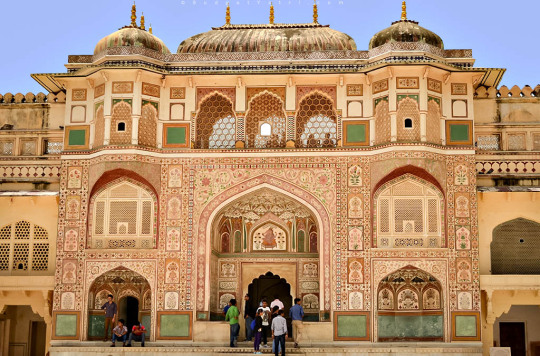#ganesh pol
Text

Ganesh Pol, Ganesh Gate, in Amber Palace, near Jaipur, India
9 notes
·
View notes
Text
Which is the Most Beautiful Place of Jaipur?

One of the most beautiful and iconic places to visit in Jaipur, Rajasthan, is the Amer Fort (also known as Amber Fort). Located approximately 11 kilometers from the city center, Amer Fort is a Stunning hilltop fort with a blend of Hindu and Mughal architectural styles. This Historical fort offers panoramic views of the surrounding hills and Maota Lake. To enhance your experience in Jaipur and visit Amer Fort comfortably, consider booking a Tempo Traveller in Jaipur.
Sheesh Mahal: See the intricate mirror work on the walls and ceilings, which creates a dazzling effect when lit.
Ganesh Pol (Ganesh Gate): See the beautiful gateway adorned with colorful frescoes and intricate carvings.
Diwan-e-Khas: See the ornate hall used by the royal family for private meetings.
Sukh Niwas: Visit the cooling area with a unique water system designed to beat the heat.
#12seatertempotraveller#tempotraveller#travel#tempotravelleronrent#actempotravel#tempotravellerinjaipur
0 notes
Text
Unveiling History's Treasures: A Golden Triangle Tour for History Buffs

India is a country rich in ancient traditions and stunning architecture. It is a destination that attracts visitors with its lively culture and fascinating history. For those interested in history, the Golden Triangle is a popular route that connects Delhi, Agra, and Jaipur, offering a wealth of historical treasures. We offer customised golden triangle tour packages that fulfill your requirements for everything you need. Each city has its own unique blend of dynasties, architectural marvels, and intriguing stories waiting to be uncovered.
Delhi: A Capital Sateeped in History
Our adventure starts in Delhi, a historic city that has seen the ebb and flow of empires throughout the ages. Must see Indiagate and the magnificent Red Fort, a UNESCO World Heritage Site that showcases the grandeur of the Mughal empire with its expansive courtyards and intricate carvings. History enthusiasts will be captivated by the National Museum, which houses artifacts spanning India's diverse past. The towering Qutub Minar victory tower and the inspiring Humayun's Tomb, a precursor to the Taj Mahal, offer further insights into Delhi's rich architectural legacy. Be sure not to overlook the opportunity for a rickshaw ride through Chandni Chowk, the bustling old city, to experience everyday life and explore shops filled with spices, fabrics, and handcrafted goods.
Agra: Where Love Reigns Supreme
In the Golden Triangle, Agra is most known for the Taj Mahal, a stunning white marble mausoleum built by Mughal emperor Shah Jahan for his beloved queen Mumtaz Mahal. It serves as symbol of love. Don't miss out on exploring Agra Fort, a red sandstone fortress that once housed the Mughal emperors. Mehtab Bagh, a Mughal garden with great views of the Taj Mahal, and the Tomb of Itmad-ud-Daulah and Taj Mahal's design shouldn't be missed.
Jaipur: The Pink City's Royal Legacy
Jaipur is a vibrant city that immerses you in the rich heritage of Rajasthan, where you can experience the grandeur of maharajas and ancient forts. One of the must-see attractions is the Hawa Mahal, also known as the Palace of Winds, a breathtaking pink sandstone structure adorned with intricate windows that offer a glimpse into the lives of royal women who observed the hustle and bustle of the streets below. Another highlight is the Amber Fort is Ganesh Pol gate, a majestic hilltop fortress that provides stunning panoramic views and showcases the architectural brilliance of the Rajput era. Be sure to visit the City Palace, a sprawling complex that houses a treasure trove of Rajput art and artifacts, as well as the Jantar Mantar, an impressive open-air astronomical observatory commissioned by a Mughal emperor. And don't miss out on exploring the vibrant bazaars filled with Rajasthani textiles, jewelry, and handicrafts that are sure to captivate your senses.
Beyond the Monuments: Unveiling Local Culture
The Golden Triangle is known for its impressive monuments, but true historical exploration goes beyond that. Dive into the vibrant local culture by wandering through lively streets and hidden alleyways. Immerse yourself in the region's artistic heritage by attending traditional music or dance performances. Learn the intricate secrets of Mughlai or Rajasthani cuisine through a cooking class, tasting flavors that have stood the test of time. Witness the timeless techniques of carpet weaving, miniature painting, or jewelry making at a local craftsman's workshop, keeping centuries-old traditions alive.
Planning Your Golden Triangle Adventure
Explore the Golden Triangle to immerse yourself in a variety of historical adventures, perfect for a customized journey based on your preferences. Whether you're drawn to Mughal architecture, Rajput courage, or the daily stories of individuals throughout history, this destination has something to captivate every history enthusiast.
Customized Tours and Travel Packages:
For an unforgettable experience, think about creating a personalized tour package. Our experienced trip organizers can assist you in planning the ideal itinerary, guaranteeing you see all the necessary historic locations while including special activities such as heritage walks, museum tours with local guides, and cultural events. So, get ready, prepare your bags, and step into a journey through time in the stunning Golden Triangle. History is waiting for you!
We design domestic package booking in gandhinagar and international package booking in gandhinagar tours that offer domestic and international travel packages. Book your flight ticket booking in gandhinagar and experience our tours and travels in gandhinagar that offer a seamless travel experience across Gandhinagar and Ahmedabad. Contact us today to start planning!
#goldentriangle#delhi#olddelhi#delhincr#delhitourism#newdelhi#agra#tajmahal#tajmahalindia#jaipur#jaipurdiaries#jaipurcity#jaipurpinkcity#goldentriangletour#goldentriangleindia#CustomizedTours#YashviToursAndTravels#travelagent#travelagency#travelagencygandhinagar#iatacertified
0 notes
Text
Rajasthan Unveiled: Engaging Insights into Facts and the Jaivana Cannon Legacy
Rajasthan, the majestic land of kings, unfolds a captivating tapestry woven with history, culture, and timeless architectural marvels. Within this journey, we venture deep into the heart of Rajasthan, revealing intriguing insights into its profound historical facts, encapsulating the grandeur of the Jaivana Cannon.
This colossal piece serves as both a testament to the regal splendor and inventive prowess that define the heritage of this royal state. Explore with us as we unravel the enchanting stories encapsulated in Facts About Rajasthan and the resounding legacy of the Jaivana Cannon.
Rajasthan: A Tapestry of History
Rajasthan, literally translated to "Land of Kings," is a region steeped in history and heritage. Home to majestic forts, opulent palaces, and vibrant traditions, Rajasthan invites travelers to embark on a journey through time. Each city within the state carries a unique story, contributing to the collective narrative of this regal land.
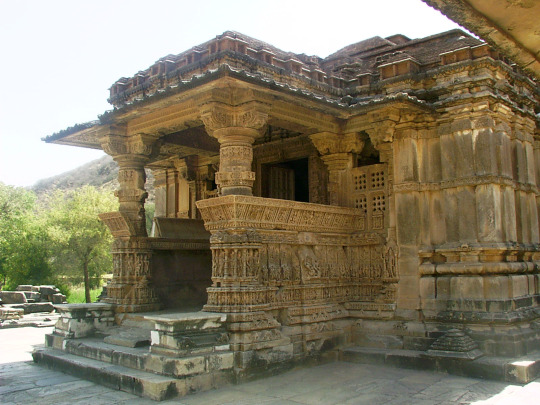
Forts and Palaces: Living Testaments to Royalty
1. Amber Fort in Jaipur
Perched on a hilltop, the Amber Fort in Jaipur narrates tales of Rajput valor and splendor. The intricate architecture, including the Sheesh Mahal (Mirror Palace) and the Ganesh Pol, showcases the artistic prowess of the bygone era.

2. Mehrangarh Fort in Jodhpur
Mehrangarh Fort, standing tall above the blue city of Jodhpur, is a formidable structure that tells the tale of Rathore rulers. The museum within the fort houses artifacts that offer a glimpse into the lives of the royal families.
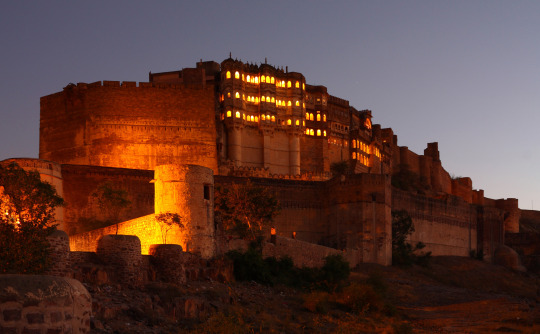
3. City Palace in Udaipur
The City Palace in Udaipur stands as a testament to Mewar's architectural grandeur. Overlooking Lake Pichola, the palace complex blends Rajasthani and Mughal styles, creating a harmonious reflection of the region's cultural amalgamation.
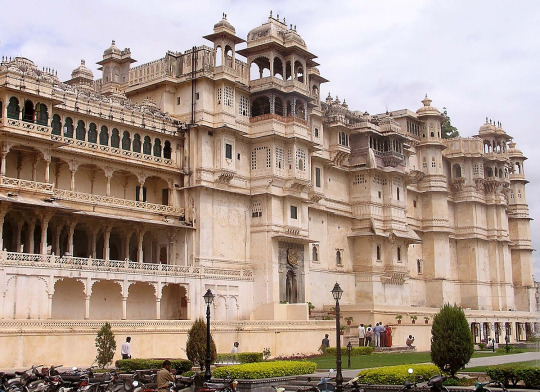
The Jaivana Cannon: Engineering Marvel of Rajasthan
1. Engineering Ingenuity
The Jaivana Cannon, located in the Jaigarh Fort of Jaipur, is a marvel of engineering from the 18th century. Commissioned by Maharaja Sawai Jai Singh II, this cannon is known for its enormous size and the ability to fire cannonballs weighing around 50 kg.
2. Massive Dimensions
Weighing approximately 50 tons, with a length of over 20 feet, the Jaivana Cannon holds the distinction of being one of the largest wheeled cannons ever manufactured. Its sheer size is a testament to the engineering expertise of the artisans of that era.
3. Strategic Significance
Constructed to defend the kingdom, the Jaivana Cannon never saw battle, yet its strategic significance is undeniable. The mere presence of such a colossal weapon served as a deterrent, a symbol of the military might and preparedness of the rulers of Jaipur.
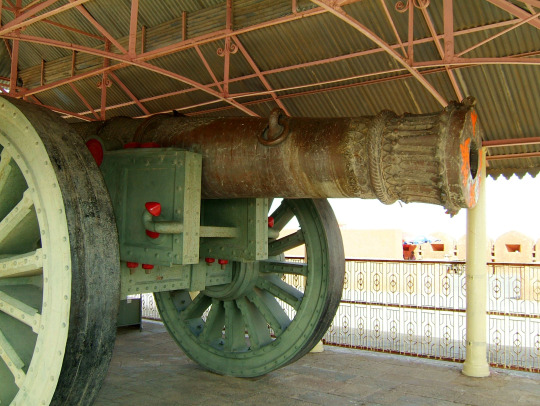
Cultural Vibrancy: Beyond the Forts and Cannons
1. Traditional Arts and Crafts
Rajasthan's cultural vibrancy extends beyond its forts and cannons. The state is renowned for its traditional arts and crafts, including miniature paintings, hand-block printing, and vibrant textiles. Markets in cities like Jaipur and Jodhpur offer a kaleidoscope of colors and craftsmanship.
2. Festivals and Celebrations
Rajasthan's calendar is dotted with colorful festivals and celebrations. From the vibrant hues of Holi to the regal splendor of the Pushkar Camel Fair, each event reflects the exuberance and joie de vivre of the people.
3. Culinary Delights
Rajasthani cuisine is a treat for the senses, with dishes like Dal Baati Churma, Laal Maas, and Ghewar offering a delectable journey through the state's culinary heritage. The royal kitchens of Rajasthan have left an indelible mark on the gastronomic landscape.
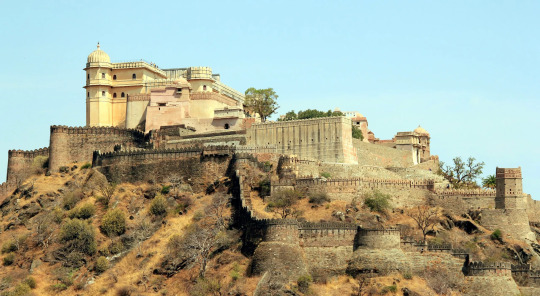
Heritage Hotels: A Luxurious Sojourn
1. Umaid Bhawan Palace in Jodhpur
Converted into a heritage hotel, Umaid Bhawan Palace in Jodhpur allows guests to experience the lifestyle of royalty. Its opulent interiors, sprawling gardens, and impeccable service redefine luxury.
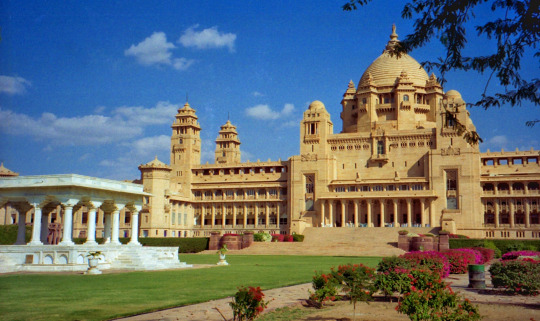
2. Taj Lake Palace in Udaipur
Situated in the middle of Lake Pichola, the Taj Lake Palace is a floating marvel that epitomizes grandeur. The hotel's regal ambiance and panoramic views make it a favored destination for discerning travelers.
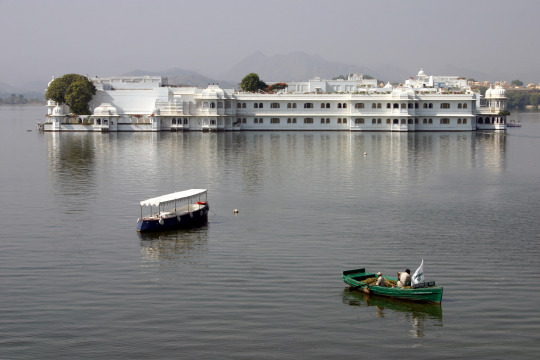
3. Rambagh Palace in Jaipur
Once the residence of the Maharaja of Jaipur, the Rambagh Palace has been transformed into a heritage hotel that exudes old-world charm. Its lush gardens and sumptuous interiors offer a glimpse into Rajasthan's royal legacy.
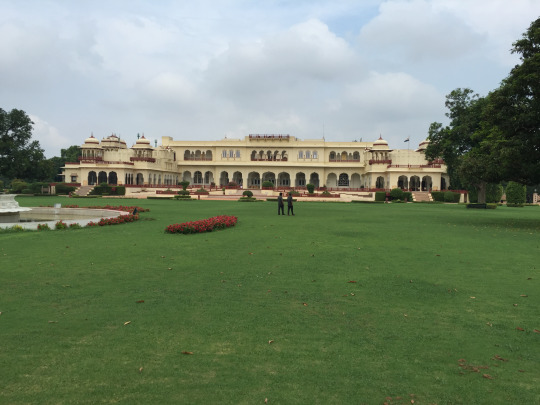
Conclusion: Rajasthan's Timeless Appeal
In conclusion, Rajasthan stands as a testament to India's rich history and cultural heritage. Beyond the forts, palaces, and cannons, the state's vibrant traditions, festivals, culinary delights, and luxurious accommodations contribute to its timeless appeal. Whether exploring the engineering marvels of the Jaivana Cannon or indulging in the regal splendor of heritage hotels, a journey through Rajasthan is a captivating experience that unveils the grandeur of this royal land.
0 notes
Text
Unlock the Magic of Jaipur : Same Day Jaipur Tour from Delhi
Introduction
Embark on a whirlwind adventure through the Pink City with our Same Day Jaipur Tour from Delhi. In just one day, experience the vibrant culture, grandeur, and architectural marvels of Jaipur, a city steeped in history. From the iconic Amer Fort to the magnificent Hawa Mahal, immerse yourself in the opulent legacy of the Rajputs. Discover the exquisite craftsmanship of the City Palace and marvel at the astronomical wonders of Jantar Mantar. Shop for traditional handicrafts and trinkets at the bustling bazaars, and savor the flavors of authentic Rajasthani cuisine. Our expert guides will ensure you make the most of your time, providing fascinating insights into the history and culture of Jaipur. Travel in comfort and style with our air-conditioned vehicles, allowing you to relax and enjoy the journey. Whether you're a history buff, a culture enthusiast, or simply seeking a memorable day trip, our Same Day Jaipur Tour from Delhi promises an unforgettable experience. Step into the resplendent world of Jaipur and create memories that will last a lifetime.

Highlights of Jaipur
Jaipur, the capital city of Rajasthan, is known as the Pink City due to the color of its buildings. This vibrant city is a treasure trove of history, culture, and architectural wonders. The Same Day Jaipur Tour from Delhi offers a unique opportunity to explore the highlights of Jaipur in just one day.
The tour begins with a visit to the magnificent Amer Fort, a UNESCO World Heritage site. Built with red sandstone and marble, this impressive fort showcases the grandeur of Rajput architecture. Explore its intricate palaces, courtyards, and gardens while enjoying panoramic views of the surrounding hills.
Next, we will visit the iconic Hawa Mahal, also known as the Palace of Winds. This stunning structure with its honeycomb-like facade was designed to allow royal ladies to observe the city's bustling streets without being seen. Admire the intricate latticework and soak in the vibrant atmosphere of the surrounding markets.
Itinerary for the Same Day Jaipur Tour
6:00 AM - Depart from Delhi
11:00 AM - Arrive in Jaipur and visit Amer Fort
1:00 PM - Lunch break at a local restaurant
2:00 PM - Explore Hawa Mahal and Jantar Mantar
4:00 PM - Visit the City Palace and Museum
6:00 PM - Enjoy shopping at the local bazaars
8:00 PM - Depart from Jaipur
1:00 AM - Arrive in Delhi
Exploring the Pink City: Jaipur
Jaipur, the capital of Rajasthan, is a city that exudes charm and elegance. Known as the Pink City, it is famous for its stunning architecture, rich history, and vibrant culture. As you explore the streets of Jaipur, you'll be greeted by the sight of majestic palaces, bustling bazaars, and colorful festivals. The city's unique blend of traditional and modern elements makes it a must-visit destination for travelers from around the world.
Must-Visit Attractions in Jaipur
Jaipur is home to several must-visit attractions that showcase the city's rich heritage and architectural splendor. One of the most iconic landmarks is the Amer Fort, located on a hilltop overlooking Maota Lake. This majestic fort is a perfect example of Rajput architecture, with its intricate carvings, stunning courtyards, and beautiful palaces. Don't miss the chance to explore the Sheesh Mahal (Mirror Palace) and the Ganesh Pol (Elephant Gate), which are highlights of the fort.
Another must-visit attraction is the Hawa Mahal, a unique five-story palace made of red and pink sandstone. The palace is renowned for its intricate latticework windows, which provide a cool breeze and offer stunning views of the city. Take a moment to admire the beautiful façade and imagine the royal ladies who once enjoyed the view from behind the delicate screens.
Experiencing the Culture and Heritage of Jaipur
Jaipur is a city that celebrates its rich culture and heritage. During the Same Day Jaipur Tour from Delhi, you'll have the opportunity to immerse yourself in the vibrant traditions of the city. From the colorful turbans and traditional attire worn by the locals to the lively folk music and dance performances, Jaipur offers a sensory feast for visitors.
To truly experience the cultural heritage of Jaipur, visit the City Palace and Museum. The palace complex, built by Maharaja Sawai Jai Singh II, is a magnificent blend of Rajput, Mughal, and European architectural styles. Explore the intricately decorated courtyards, beautiful gardens, and fascinating museums that showcase the royal artifacts and artworks of the bygone era.
Local Cuisine and Shopping in Jaipur
No visit to Jaipur is complete without savoring the flavors of authentic Rajasthani cuisine. The city is renowned for its mouthwatering delicacies, such as dal bati churma, gatte ki sabzi, and ker sangri. Indulge in a traditional Rajasthani thali, which offers a variety of dishes that will tantalize your taste buds.
After a delicious meal, head to the local bazaars to indulge in some shopping. Jaipur is famous for its handicrafts, textiles, and jewelry. Explore the bustling markets of Johri Bazaar and Bapu Bazaar, where you'll find exquisite handcrafted items, colorful textiles, and sparkling gemstones. Don't forget to bargain with the friendly shopkeepers to get the best deals.
Tips for a Successful Same Day Jaipur Tour
Start early to make the most of your day in Jaipur.
Wear comfortable footwear as you'll be doing a lot of walking.
Carry a hat, sunscreen, and sunglasses to protect yourself from the sun.
Stay hydrated by carrying a water bottle with you.
Respect the local customs and dress modestly, especially when visiting religious sites.
Listen to your guide's instructions and ask questions to enhance your understanding of the history and culture of Jaipur.
How to Book a Same Day Jaipur Tour from Delhi
Booking a Same Day Jaipur Tour from Delhi is quick and easy. Simply visit our website or contact our customer service team to make a reservation. Choose the date and time that suits you best, and our team will handle the rest. Our experienced guides and comfortable vehicles will ensure a hassle-free and memorable journey.
Conclusion: Make the Most of Your Same Day Jaipur Tour
The Same Day Jaipur Tour from Delhi offers a unique opportunity to explore the vibrant culture, splendid architecture, and rich history of Jaipur. From the majestic Amer Fort to the iconic Hawa Mahal, every moment of the tour is filled with awe-inspiring sights and experiences. Immerse yourself in the resplendent world of Jaipur, savor the flavors of authentic Rajasthani cuisine, and take home memories that will last a lifetime. Book your Same Day Jaipur Tour from Delhi today and embark on an unforgettable adventure through the Pink City.
#same day jaipur tour#private jaipur tour#jaiour sightseeing tour#one day jaipur tour#one day jaipur tour from delhi#jaipur tour
0 notes
Text
8 Best Things to do in Jaisalmer
1.Golden Fort Jaisalmer [Sonar quila]
At a distance of 1.5 km from Jaisalmer Railway Station, Jaisalmer Fort locally known as Sonar Quila (Golden Fort) is located in the heart of Jaisalmer city. It is one of the largest forts in the world and also one of the top places to visit in Jaisalmer. Jaisalmer Fort. is a World Heritage Site declared by UNESCO under the group Hill Forts of Rajasthan.
Jaisalmer Fort was built atop the Trikuta Hill in 1156 AD by the Bhati Rajput ruler Maharawal Jaisal Singh, from where it originates its name. It was the center of a number of historical encounters between the Bhattis, Mughals, and Rathores of Jodhpur. The Fort of Jaisalmer survived several attacks by the Muslim rulers like Aladdin Khilji and Mughal Emperor Humayun. The city also served as a refuge and way-station for caravans and travelers along the Silk Road.
Standing proudly in the middle of the great Thar Desert, this fort is regarded as 'The Pride of Jaisalmer'. Its massive yellow sandstone walls are a tawny lion color during the day, fading to honey-gold as the sun sets, thereby hiding the fort in the yellow desert. For this reason, it is also known as the Sonar Quila or Golden Fort.
The Jaisalmer Fort architecture is awe inspiring and marvelous. The seamless blend of Rajput and Islamic styles, the golden tinge due to the yellow sandstone, and the enthralling carvings & sculptures make it rank among the glorious forts in Rajasthan. It is 1,500 ft long and 750 ft wide and is built on a 250 ft high hill. The basement of the fort has a 15 ft tall wall forming a double line of defense. The fort is protected by a 30 ft tall wall surrounding it on all sides. This fort comprises of 99 bastions providing crucial protection to the fort during attacks.
Inside the fort complex, tourists can find several architectural buildings which include palaces, houses and temples. Jaisalmer fort has narrow winding pathways which interlock several parts of the fort. The complex of Jaisalmer fort is so expansive that almost one-quarter of the town's population located inside the fort itself. There are numerous wells inside the fort that are a regular source of water for residents.
The fort has four entrances namely Ganesh Pol, Rang Pol, Bhoota Pol and Hawa Pol. The main attraction of the fort is Maharawal Palace popular for its marble throne. The Palace also has a wonderful museum which showcasing arms, dresses, utensils, & ornaments of the Rajput kingdom. An added attraction of this place is a five-storied Tazia tower located parallel to the Maharawal Palace. This tower was constructed by Muslim craftsmen and is made with decorative Bengali styled roofs. Jain Temple and Lakshmi Temple are also quite famous among the visitors.
Palace Timings: 9 AM to 6 PM
Palace Entry Fee: Rs. 50 for Indians, Rs. 250 for Foreigners, Rs. 50 for Camera
2. Patwon ki Haveli Jaisalmer :-
At a distance of 500 m from Jaisalmer Fort and 1.5 km from Jaisalmer Railway Station, Patwon-ki-Haveli is situated in a narrow lane near the Patwa Complex in Jaisalmer. It is the first haveli to have been erected in Jaisalmer and also one of the top places to visit in Jasalmer.
The Patwon ki Haveli is considered to be the one of the largest as well as the finest haveli of Rajasthan. This haveli is essentially a cluster of five havelis, which was constructed in 1805 CE by Guman Chand Patwa. A rich trader, Guman Chand Patwa constructed five separate sections for his five sons. The first haveli is the main and also the grandest haveli in the complex. The entire construction took over 55 years to complete.
Located in the center of the city, it is truly an outstanding piece of architecture. It is renowned for its ornate wall paintings, intricate yellow sandstone-carved jharokas or balconies, gateways and doorways. The haveli is built using yellow sandstone and the main gateway is brown in colour. The haveli is five stories high divided into six apartments. The walls also feature beautiful mirror work and several paintings. There is a stunning apartment which is flawlessly painted with beautiful murals. There are about 60 balconies in the haveli.
Amongst the five Havelis which form the entire complex, one has been converted into a museum which displays a vast collection of antique furniture and decorative goods. Besides this, the third Haveli or mansion in the premises also houses rich items that include traditional art and craft work of the local craftsmen. Two havelis are under the authorization of the Archaeological Survey of India and one serves as private accommodation.
Currently, this haveli is maintained by the state government, which uses it for different official purposes. The office of State art and craft department and the Archeological Survey of India (ASI) is placed in the haveli.
Timings: 8 AM to 6 PM
Entry Fee: Rs. 20 for Indians, Rs. 100 for Foreigners and Rs. 50 for Camera
3. Jaisalmer War Museum :-
At a distance of 11 km from Jaisalmer Railway Station and 12 km from Jaisalmer Fort, Jaisalmer War Museum is situated at Military Station on the Jaisalmer - Jodhpur Highway. This unique war museum is surely a must visit place for all Indian and foreigner tourists coming to Jaisalmer.
Jaisalmer War Museum was set up by the Indian Army in 2015 and was inaugurated on 24th August by Lieutenant General Ashok Singh, General Officer Commanding in Chief, Southern Command. The inauguration of the Museum in the Golden Jubilee Commemoration Year of 1965 Indo Pak War is also a tribute to all soldiers who made the supreme sacrifice.
The museum covers an area of over 10 acres of land. It has two large Information Display Halls, an Audio Visual Room and a souvenir shop. Apart from the evolution of the Indian Army, the museum showcases tales of bravery and sacrifice of heroes of the wars. War trophies and vintage equipment are on display along with tanks, guns and military vehicles. The museum has murals of soldiers who lost their lives in the war and weapons used at that time. The Indian Air Force has also contributed in the museum by presenting a hunter aircraft, which was used during the Battle for Longewala during the 1971 Indo Pak War.
The Museum is organized by the Indian Army. The entry to the Jaisalmer War Museum is open to and free for all visitors.
Timings: 10 AM to 6 PM
4. Tanot Mata Temple Jaisalmer :-
The Tanot Mata Temple situated in the Tanot village of district Jaisalmer, is a major attraction for those visiting the Thar Desert in Rajasthan. It is enveloped within numerous legends that are sure to instil awe and curiosity towards its sacred power and purity. The heritage site is preserved and maintained by the Border Security Force (BSF) of India since the Indo-Pakistan war in 1971.
Localities have immense faith on the temple’s austerity and pay regular visit to the Tanot Mata. She is believed to be an apparition of the Hinglaj Mata Goddess. Tanot is in close proximity with Longewala, a critical India-Pakistan border that forbids access to any individual without permission of Indian Government authorities. Due to its topography, it can harness large quantities of wind energy, thus visitors can see the rows of windmill energy power plants established here. There is a museum built adjacent to the temple that displays certain historic artefacts collected from the war period. This is a must visit place for those who wish to pay their homage to the Indian Army and the temple that is considered holy by the Indian heroes of defence and harmony.
History :-
It is said that during the Indo-Pakistani War of 1965, Pakistani Army dropped over 3000 bombs targeting the temple but not even one exploded! The Pakistani Tank regiment was stupefied and kept shelling but not one bomb exploded. After the war the Pakistani General actually asked his counterpart in India about this incident and on knowing the story of the power of the temple that apparently protected the area he asked to see this place. This request was granted and the Pakistani General actually went to the temple and paid his respects and acknowledged the supernatural happening. After the war the temple management was handed over to Border Security Force of India on their request and to date the temple is maintained and manned by the BSF soldiers.
After paying your respects to the Goddess, you can take a round of the museum established in the same vicinity. It holds a public exhibition of the arms and ammunitions used during the Indo-Pakistan wars of 1965 and 1971. They hold great significance, as the bombs used to attack the natives of Tanot village never diffused. The place is one of the best place to explore in the Thar Desert in Rajasthan. This temple was shown in the film Border. The best time to visit is November – January, when the temperature is not likely to be extremely high. Taxis can be hired from Jaisalmer After completing this pilgrimage trip, you can plan a camel safari in the Thar Desert or plan a sightseeing trip of the majestic forts of Jaisalmer.
Longewala Border :-
Longewala is a border town in Thar desert near Jaisalmer, Rajasthan. The army of Lt. Kuldip Singh was commanding this small post because on the other side Pakistani forces were awaiting an opportunity to attack and takeover Jaisalmer. At the night of 4th December 1971, the Indian army observed noises across the border that suggested a heavy platoon approach. As it was dark, the moon was the only source of light that lit the scene.
The Battle
When sources confirmed that Pakistan indeed was approaching, Lt. Kuldeep Singh contacted the headquarters and asked for reinforcements. He was informed that it would take six hours for backup to be available and was advised to retreat to a nearby town, Ramgarh. But Kuldeep Singh and his men held ground fearlessly and decided to fight. After midnight Pakistan surfaced near Longewala and opened fire with artillery guns. As the 45 heavily equipped tanks of Pakistan approached the border, Indian defences laid a hasty anti-tank minefield. Indians were at the advantage of holding the higher ground; Pakistani tanks struggled to move upward and blasted themselves in doing so. This gave an opportunity to Indian soldiers to spot and attack the enemy, a fire lit the otherwise dark battlefield. Indian defence used a smoke screen to confuse the Pakistani soldiers and stalled the battle till reinforcements arrived.
Who won the battle?
India, though outnumbered, applied clever strategies to maneuver its way through the fight. After a long battle, Indian Air force was able to send backup in the morning. Now, the opposition’s battalion was an easy target as they were on the ground and didn’t have an Airforce to help them out. After getting 22 tanks blasted with rockets, Pakistani army was forced to withdraw.
Aftermath of the battle
120 soldiers against 2000, sounds daunting. But what’s surprising is that India only lost 2 soldiers and 1 tank while Pakistan lost 200 soldiers and 36 tanks, in the battle. Kuldeep Singh was applauded for his strategic win and was conferred with the Mahavir Chakra for showing great courage.
Longewala hosted a fray that speaks of sheer fearlessness and heroism of Indian soldiers. It’s a perfect example of how a fight can be smoothly won if you club your fires with a little strategy. The valor displayed by Kuldeep Singh and his men is now dictated to the army, to build their mettle and to inspirit them with enthusiasm. This battle was one of a kind and deservingly fixed a spot in Indian history.
Kuldhara village – Haunted Village Sam Road jaisalmer
Kuldhara Village, located within 20 kilometres from the Golden City Jaisalmer is not always a known name among the tourists, but a little research will show how this is one of the most interesting and intriguing attraction sites that you should absolutely include in your itinerary. The village, rich with its fair share of legends and myths, is said to be a spooky and haunted village. The abandoned and eerily beautiful appearance of it, standing solitary amidst the vast stretches of desert, lives up to its reputation. There have been stories of ghostly and paranormal activities in and around the village, but like always no one could provide any solid proof of it. Nevertheless, Kuldhara village is an exciting place to visit just for its architectural beauty and the vibe of history.
Once you visit the place, the sheer blankness of the village so massive, yet so eerily silent and abandoned with just the houses standing like skeletal corpses of the past engulfs you entirely. Adds to that the legend how the residents of the entire area left the place overnight altogether to save their honors and lives from the hands of the tyrannical minister who ruled over the place, and you have got the perfect setting for a bestselling horror story.
There is nothing to do as such, but the experience itself makes up for all of it. The government with the help of some private construction companies are setting up cafes, restaurants and even lodges for the night stay to turn the place into a full-fledged tourist place. The constructions are undergoing as of December 2017 and once finished, Rajasthan hopes to attract more people to visit and experience the great beauty amidst the barrenness.
Bada Bagh jaisalmer :-
At a distance of 8 km from Jaisalmer Railway Station and 7 km from Jaisalmer Fort, Bada Bagh or Bara Bagh is a historical garden located on Ramgarh road and halfway between Jaisalmer and Lodurva in Rajasthan.
Bada Bagh means big garden. It is a garden of cenotaphs or chhatris of the royal family of Jaisalmer. A descendant of Maharawal Jaisal Singh, Jait Singh II, commissioned a dam to create a water tank in the 16th century AD. This made the desert green in this area. After his death, Bada Bagh was fully developed by his son Lunakaran.
The garden stands at the foot of a hill and several chhatris or cenotaphs stand in memory of the late rulers of Jaisalmer. Cenotaphs are also known as chhatris and one cenotaph is erected for each ruler. The cenotaph of Maharawal Jait Singh is the oldest of all. Many cenotaphs were built by subsequent rulers for the Bhatti royal family of Jaisalmer. This continued till the 20th century when the last one for Maharawal Jawahar Singh was left incomplete as his son who ascended the throne after him, died within one year of his ascension. This was considered to be bad luck and from then on, the tradition of cenotaphs at Bada Bagh was discontinued.
The architecture of these chhatris is a blend of Paliwal, Mughal, and Rajput styles of architecture. Each cenotaph contains inscribed tablets with names of the King and Queen. Some of the cenotaphs have a statue of the King on a horse along with his queen standing nearby. The size of the chhatri varies according to the status of the person.
This garden also includes a tank and a dam, along with a Govardhan Stambh (pillar). The pillar was constructed for commemorating the construction of the nearby tank and dam. Locals refer to the dam as Jait Bandh, while the tank is known as Jait Sar. The Jait Bandh is a huge structure measuring over 1,200 feet in length and 350 feet in width. Both the tank and dam has been constructed using solid blocks of stone.
Timings: 8 AM to 6 PM
Entry Fee: Rs. 20 for Indians and Rs. 50 for Foreigners
Gadisar lake Jaisalmer :-
At a distance of 1.5 km from Jaisalmer Railway Station and 1.5 km from Jaisalmer Fort, Gadisar Lake or Gadsisar Lake is an artificial reservoir in Jaisalmer. It was the only source of water for the Jaisalmer city in the olden days and also one of the best Jaisalmer sightseeing places.
The Gadisar Lake was constructed by Raja Rawal Jaisal, the first ruler of Jaisalmer and later reconstructed by Maharawal Gadsi Singh in the year 1367 AD. It is said this rain water lake once provided water to the entire town. At present Gadisar Lake gets water from Indira Gandhi Canal so it never dries.
Located towards the south of Jaisalmer city, the entrance to the Gadisar Lake is through a magnificent and artistically carved yellow sandstone archway that is known as the Tilon-Ki-Pol. There are numerous shrines and small temples on the embankment of this lake. The most popular among these temples is the Krishna Temple which houses a statue of Lord Vishnu. There is a big domed pavilion in the center of the lake. The main attractions of the lake are the different species of birds, which migrate from distinct places.
The Gadisar Lake can be visited any time of the day, though it is best to go early in the morning and watch the sun rise. Boating facility is also available in this lake where charges vary from type of boat and based on duration of boating. Shikaras are also available to go around the lake. The serene Gadisar Lake springs to life during the annual Gangaur celebrations. This is the most popular point to take photographs of Jaisalmer Fort early in the morning when the fort looks golden with the first rays of the Sun and also a bird viewing site and a major attraction of Jaisalmer city.
Timings: 6 AM to 6 PM
Sam Sand Dunes Jaisalmer :-
At a distance of 40 km from Jaisalmer, Sam Sand Dunes are situated at the edge of Jaisalmer Desert National Park in Rajasthan. Lies in the midst of the Thar Desert, these sand dunes are amongst the most popular places to experience Rajasthan Tourism and also one of the prime places of Jaisalmer Tourism.
Sam has a truly magnificent stretch of sweeping dunes, with sparse or no vegetation. The 3 km long, and 1 km wide sand dunes reflect the true image of Rajasthan. Undeniably one of the most picturesque spots in the desert, the Sam Sand Dunes have gained tremendous tourist reputation over the time. The unrelieved ocean of sand constantly changes its appearance at every gentle gush of wind. The whirling air currents of this area match with those of the sandstorms in the Sahara. This time many Desert camp In sam sand dunes But Garh Rajputana camps is luxury Desert camp in Jaisalmer , Camp offer Camel Safari, there are many other Adventure activities like jeep safari, Paragliding, Quad Bike safari and desert camping at Sam Sand Dunes. Night stay with Swiss tents and mud cottages next to dunes. Adding to the magical charm of the atmosphere are the wonderful folk dance and music performance by the local artists. . . Tourists can be assured of enjoying the magic of dunes completely in the company of these guides. The dunes are best visited during the months between October and February when the heat is relatively less in the region. Evenings and night are the best times to visit the dunes because at this time the silver rays of moon spread its radiance in the entire region thereby making it glow like an ornament.
There is a Desert Festival organised in the month of February and is the best time to visit these dunes. This is a 3-day event showcasing the heritage and culture of Rajasthan. This extravaganza includes of a lot of events such as puppet shows, various competitions such as tug of war and Biggest Moustache, camel race, various folk performance and more. During this time, the desert comes alive with the sound and light show, dance and music.
0 notes
Text
Exploring Royal Rajasthan: A Jaipur City Tour
Exploring Royal Rajasthan: A Jaipur City Tour
The vibrant and culturally rich state of Rajasthan, India, is home to a treasure trove of historical and architectural wonders. Among its many illustrious cities, Jaipur, often referred to as the "Pink City," stands out for its majestic palaces, forts, and vibrant bazaars. A visit to Jaipur is an immersion into the regal history and grandeur of the Rajasthan tour. In this article, we will embark on a virtual journey through Jaipur's top attractions, including the magnificent Amber Fort, the resplendent City Palace, and the awe-inspiring Jantar Mantar Observatory.
Visiting the Pink City: Top Attractions in Jaipur City Tour
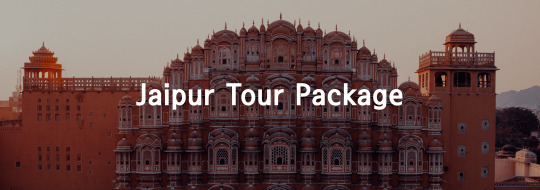
The Amber Fort: Perched atop a rugged hill, the Amber Fort, also known as Amer Fort, is a breathtaking fusion of Rajput and Mughal architectural styles. This colossal fort is a testament to the rich history of Rajasthan and its erstwhile rulers. As you ascend the fort's imposing ramparts, you'll be greeted by intricately designed gateways, stunning courtyards, and ornate palaces. The Sheesh Mahal, adorned with intricate mirror work, and the Diwan-i-Am, the hall of public audience, are standout features that transport visitors back in time.
City Palace: Adjacent to the bustling bazaars of Jaipur, the City Palace stands as a symbol of the city's royal heritage. A remarkable blend of Rajput, Mughal, and European architectural elements, the palace complex comprises an array of courtyards, gardens, and buildings. The Chandra Mahal within the complex offers a glimpse into the opulent lifestyle of the royals, while the Mubarak Mahal showcases an impressive collection of textiles and costumes. The fusion of art, culture, and history in the City Palace is truly captivating.
Jantar Mantar Observatory: For those intrigued by astronomy and architectural precision, the Jantar Mantar Observatory is an absolute must-visit. Constructed by Maharaja Jai Singh II, this UNESCO World Heritage site features a collection of astronomical instruments that were ahead of their time. The Samrat Yantra, the world's largest sundial, and the Jai Prakash Yantra, used for measuring the positions of celestial bodies, are remarkable feats of astronomical innovation that continue to intrigue visitors.
Experiencing the Grandeur of Amer Fort and Jal Mahal
Amer Fort: The Amer Fort, a short drive from the heart of Jaipur, presents a mesmerizing spectacle as it reflects Maota Lake. The fort's exterior magnificence is matched only by its interior marvels. The Sheesh Mahal, embedded with thousands of reflective glass pieces, creates an enchanting play of light. The Ganesh Pol, an ornate gateway adorned with frescoes, leads the way to private chambers that echo tales of the past. As you walk through its corridors and chambers, the Amer Fort whispers the stories of valor and luxury that define Rajasthan's history.
Jal Mahal: Floating serenely in the middle of Man Sagar Lake, the Jal Mahal is a water palace that encapsulates the ethereal beauty of the Rajasthan tour. This architectural masterpiece appears to rise from the tranquil waters, with its intricate design and red sandstone walls contrasting against the azure backdrop. While the palace itself isn't open to the public, the view from the banks of the lake is a sight to behold, especially during sunrise and sunset when the palace is bathed in a golden glow.
Marvelling at the Architectural Wonders of Hawa Mahal and City Palace
Hawa Mahal: The Hawa Mahal, or "Palace of Winds," is perhaps one of Jaipur's most recognizable landmarks. This five-story palace is a marvel of Rajput architecture, characterized by its honeycomb-like facade with 953 intricately carved windows. Built to allow the royal women to observe street festivals without being seen, the Hawa Mahal is a delicate blend of beauty and purpose. Its pink and red sandstone hues are particularly striking, adding to the charm of the Pink City.
City Palace (Continued): The journey through the City Palace continues to amaze with the fusion of historical richness and living culture. The palace is not a static relic but a vibrant center that houses museums, galleries, and even a royal residence. The Govind Dev Ji Temple within the palace complex is a significant religious site, attracting devotees and tourists alike. The royal family's continued association with the palace adds a touch of authenticity to the entire experience.
Discovering the Markets and Bazaars of Old Jaipur
When wandering through the labyrinthine streets of Old Jaipur city tour, one is inevitably drawn into a world of vibrant markets and bustling bazaars that have stood the test of time. Among these, the Johari Bazaar, Tripolia Bazaar, and Chandpol Bazaar stand out as quintessential destinations for an authentic shopping experience. These markets not only showcase the city's rich cultural heritage but also offer a glimpse into the traditional trade practices that have thrived for centuries.
Johari Bazaar:
The Johari Bazaar, often referred to as the "Jeweler's Market," is a haven for those seeking intricate jewellery pieces that reflect the artistry of the Rajasthan tour. The market's narrow lanes are lined with shops adorned with glittering ornaments, from elegant Kundan and Polki jewellery to elaborate Meenakari work. Exquisite gems, precious metals, and skilled craftsmanship come together in a symphony of tradition and luxury. A walk through Johari Bazaar is an immersion into the world of timeless adornments that have graced the royalty of Rajasthan for generations.
Tripolia Bazaar:
The historic Tripolia Bazaar derives its name from the triple-arched gate that once marked its entrance. Today, this bustling marketplace is a treasure trove of textiles, perfumes, and traditional Rajasthani crafts. As you meander through the narrow lanes, the vibrant hues of fabrics and textiles catch your eye. Traditional Bandhani, leery, and block-printed fabrics adorn the stalls, each telling a story of Rajasthan's rich textile heritage. The fragrant aroma of traditional attars (perfumes) lingers in the air, inviting visitors to indulge in the scents that have been cherished for centuries.
Chandpol Bazaar:
Chandpol Bazaar, the "Moon Gate Market," is a hub for those seeking a wide array of items, from traditional handicrafts to everyday essentials. The market's historical significance lies in its location, where the moon gate once marked the city's entry point. Today, the bazaar is a vibrant blend of old-world charm and modern commerce. Chandpol Bazaar is particularly famous for its vibrant fabrics, dyed in eye-catching colors that Rajasthan is known for. Traditional textiles, utensils, and everyday commodities create a lively atmosphere that captures the essence of local life.
Conclusion
A visit to Jaipur is a sensory overload of colors, history, and architectural brilliance. The city's ability to preserve its heritage while embracing modernity is commendable. Each monument weaves a tapestry of stories, from the valor of kings to the artistry of craftsmen. The Amer Fort's grandeur, the allure of Jal Mahal's waters, the intricate designs of Hawa Mahal, and the sprawling City Palace together encapsulate the essence of Jaipur's heritage.
As you traverse the historic pathways, you become part of the legacy that Rajasthan carries with pride. The Pink City, with its architectural wonders and cultural richness, beckons travellers to explore its lanes, appreciate its beauty, and immerse themselves in the royal charm that defines the Jaipur city tour. Whether you're a history enthusiast, an architecture aficionado, or a casual traveller, Jaipur's treasures will undoubtedly leave an indelible mark on your heart and mind.
0 notes
Text
Golden Triangle India
The famed Golden triangle trip is the greatest method to gradually get to know India if you're visiting for the first time. Three cities make up the golden triangle tour: Delhi, Agra, and Jaipur.
1) VISIT IN NEW DELHI
Since its founding in the sixth century BC, this interesting city has experienced ups and downs, including the reign of the Pandavas and the British Raj. Visit the Jama Masjid, the largest mosque in India and a Shah Jahan creation. The mosque's courtyard has enough for roughly 25,000 worshipers. Take a rickshaw trip through Old Delhi's main market, Chandni Chowk... tumultuous, loud, and distinctively Indian. It is still important today because the Indian flag is raised and the Prime Minister delivers a speech from its walls on Independence Day. Before heading to Rajghat, the Mahatma Gandhi memorial, drive through the India Gate, the President House, and various other governmental structures in Edwin Lutyen's Delhi. The place where Mahatma Gandhi was cremated in 1948 is marked by this unassuming monument. Visit Humayun's Tomb, which was built in 1562 on orders from Humayun's wife Hamida Banu Begum. It was the first garden tomb constructed on the Indian subcontinent using a sizable amount of red sandstone. Delhi overnight.
2) DELHI - AGRA
Drive to Agra and continue on a half-day city tour. Visit the Red Fort, which Akbar, the Mughal Emperor, ordered in 1565. The structure is a stunning example of Mughal architecture, both beautiful and intimidating. Visit the Taj Mahal later; it was created as a memorial to the late Emperor Shah Jehan's adored queen Mumtaz Mahal. Its construction, which was regarded as an architectural marvel, required thousands of employees over 21 years to complete. Agra, overnight.
3) DRIVE AGRA - JAIPUR
Travel by car to Jaipur Observe the historical structures of Fatehpur Sikri, which the Emperor Akbar erected. Akbar intended to establish Fatehpur Sikri as his administrative centre, but he was forced to leave it because of a water shortage. The Sufi saint who lived a pious life here is commemorated in the Tomb of Sheikh Salim Chishti. The UNESCO has designated Fatehpur Sikri as a World Heritage Site. Continue your trip to Jaipur, where you can check into your hotel. The state of Rajasthan is lovely and active, and Jaipur serves as its entrance. Take a stroll through Jaipur's markets in the evening to look for traditional clothing and footwear, as well as curio stores and blue pottery. Jaipur overnight stay.
Sightseeing of Jaipur
Continue on a full-day tour to Jaipur, commonly referred to as the "Pink City," for sightseeing. The state of Rajasthan's capital, Jaipur, is renowned for its vibrant culture, forts, palaces, and lakes. The warrior monarch Sawai Jai Singh II, who founded the city, is responsible for giving it its name. Check out the Amber Fort. Riding an elephant up to the fort is the ideal way to explore it. The Diwan-i-Aam, a hall with hundreds of tiny mirrors, the Ganesh Pol, which has a lovely painted depiction of Lord Ganesh, and the exquisite Sheesh Mahal are prominent buildings inside the fort. Later, make a pit break to take pictures of the stunning Hawa Mahal, popularly referred to as the "Palace of the Winds." The women of the palace were given privacy when looking out through the ornately carved latticework windows on this lovely façade. Later, you'll go to the City Palace, which blends Mughal and Rajasthani design elements. The museums in this region include rare and antiquated texts, 15th-century weaponry, and former royal attire. Visit the Jantar Mantar Observatory later on, which has tools for tracking stars' orbits and calculating time geometrically. Jaipur overnight stay.
Also See:
Kedarkantha Trek
Brahmatal Trek
Chadar Trek
Kheerganga Trek
Kasol Kheerganga Trek
Kasol Tosh Kheerganga
Kasol Weekend Trip
Golden Triangle India (https://moustachescapes.com/blog/golden-triangle-india/)
Triund Trek
Hampta Pass Trek
Desert Safari Jaisalmer
Winter Spiti Tour
Laka Glacier Trek
Bhrigu Lake Trek
Everest Base Camp Trek
Dayara Bugyal Trek
Kuari Pass Trek
Har Ki Dun Trek
Roopkund Trek
Ali Bedni Bugyal Trek
Indrahar Pass Trek
0 notes
Photo
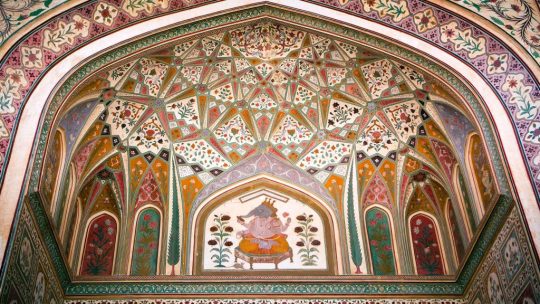
Ganesh Pol, Ganesh Gate, in Amber Palace, near Jaipur, India
6 notes
·
View notes
Text
10 Awesome Facts About Udaipur That You Didn’t Know
Udaipur is a beautiful city in Rajasthan, India. It is also known as the "City of Lakes" because of its many artificial lakes. Udaipur is a very popular tourist destination, and for good reason! The city has a lot to offer, from stunning architecture to delicious food. Here are 10 facts about Udaipur that you may not know:
1. Udaipur was founded in 1559 by Maharana Udai Singh II.
2. The city was originally named after its founder, Udai Singh II. However, it was later renamed to "City of Lakes" because of its many artificial lakes.
3. The largest lake in Udaipur is Lake Pichola, which covers an area of 4 square kilometers.
4. There are a total of four artificial lakes in Udaipur: Lake Pichola, Fateh Sagar Lake, Udai Sagar Lake, and Jaisamand Lake.
5. Udaipur is home to the world's second tallest free-standing statue, the Ganesh Pol.
6. The City Palace is one of the largest palaces in India and is located on the banks of Lake Pichola.
7. The Monsoon Palace, also known as the Sajjan Garh Palace, is located on top of a hill overlooking Lake Pichola and provides a stunning view of the city during the monsoon season.
8. One of the most popular tourist attractions in Udaipur is the Jagmandir Island Palace, which is located on an island in Lake Pichola.
9. The Bagore Ki Haveli is a 18th-century haveli located on the banks of Lake Pichola that now houses a museum displaying Rajasthani culture and heritage.
10. Savitri Temple is a temple dedicated to the goddess Savitri and is located on top of a hill in Udaipur with a panoramic view of the city below.
Udaipur is truly a city with something for everyone – from history buffs to nature lovers to those who just want to relax and take in the scenery! Whether you're planning a trip or just curious about this fascinating city, we hope these 10 facts have piqued your interest!
If you are visiting Udaipur, then hire taxi from Car Rental Service Rajasthan. Also Call us at: +91-9828253341
#taxi service#Taxi Service in Udaipur#car hire in udaipur#car rental in rajasthan#carrentalinudaipur#best taxi service#udaipur#udaipurlakecity
0 notes
Photo
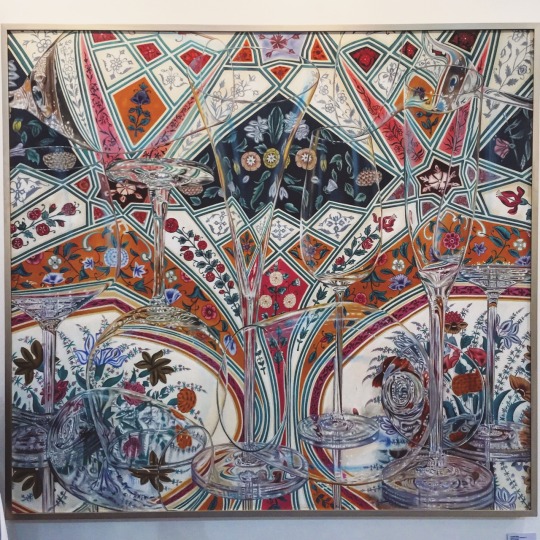
Taufeer Khan Mughal Pattern Reflection - II Oil on Canvas 66" x 71" 2016
#art#life imitates art#ode#Jaipur#Ganesh Pol#Amber#Palace#Beaut#Beautiful#India Art Fair#Taufeer Khan#Size Up#India Art Fair 2017#New Delhi#Delhi#Delhi Diaries
50 notes
·
View notes
Photo

Ganesha Silver Carving and Rajputi Painting at The Udaipur City Palace
Ganesh temple with Silver Carving and Rajputi Painting into the gate of ganesh pol at The Udaipur City Palace.
🙏🏻🕉️❤️🚩😊
(via Instagram: Deepanshu Vashishtha)
76 notes
·
View notes
Photo
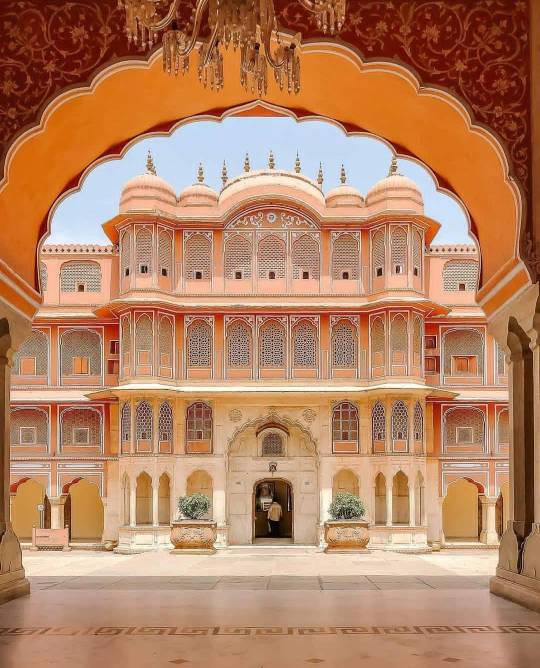
Amer fort, Ganesh Pol (Gate), Jaipur (India) [1080x1336]
4 notes
·
View notes
Photo
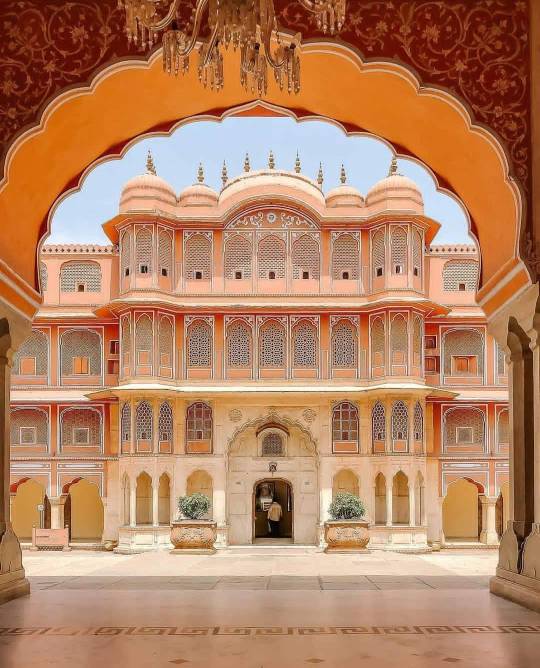
Amer fort, Ganesh Pol (Gate), Jaipur (India) [1080x1336] via /r/ArchitecturePorn https://www.reddit.com/r/ArchitecturePorn/comments/lenmjp/amer_fort_ganesh_pol_gate_jaipur_india_1080x1336/?utm_source=ifttt
2 notes
·
View notes

